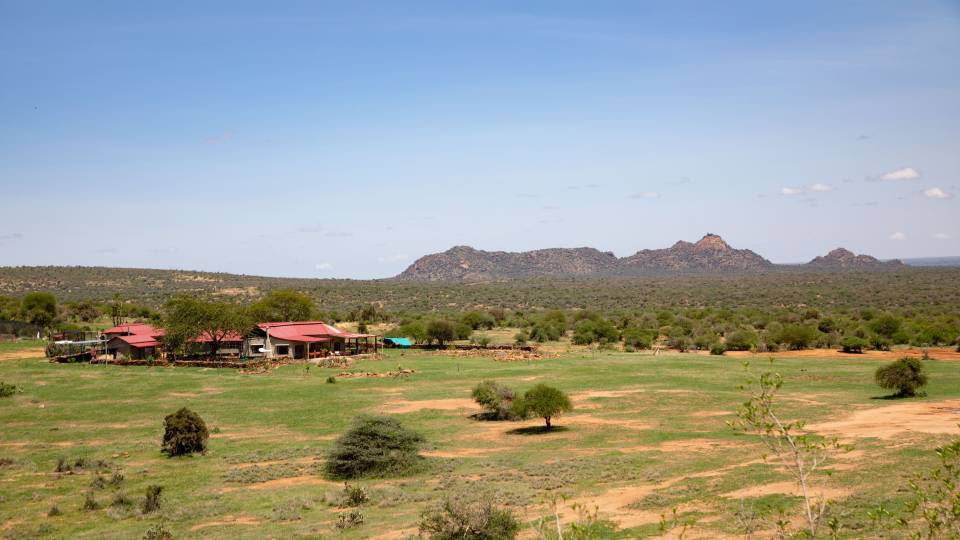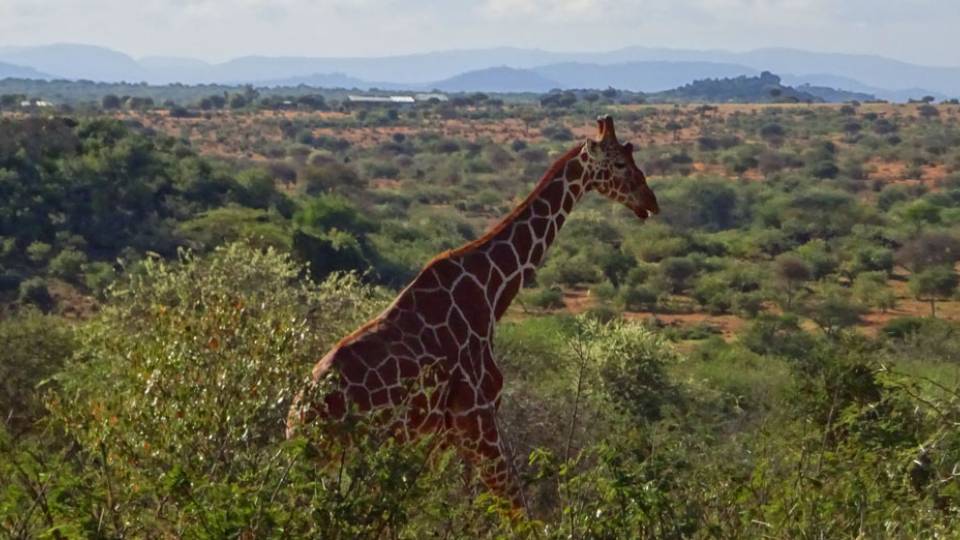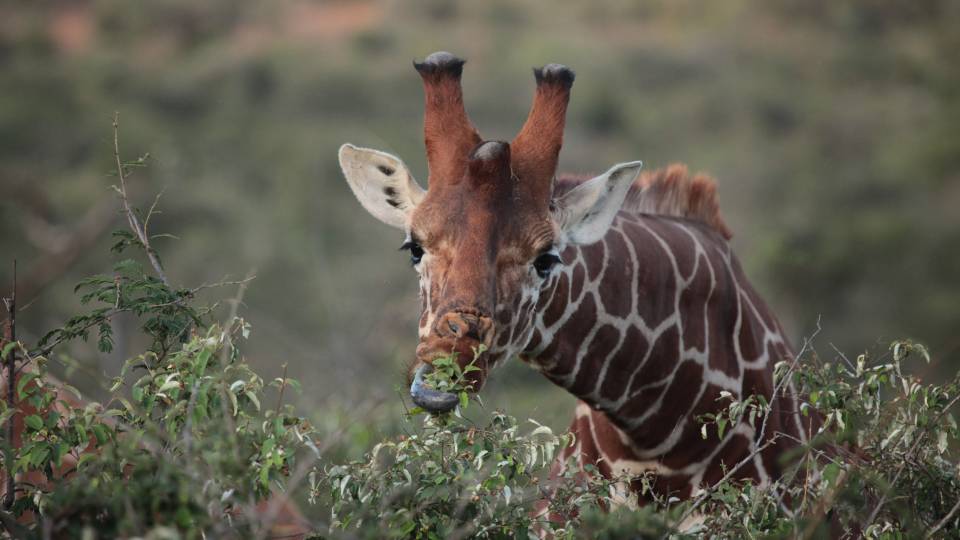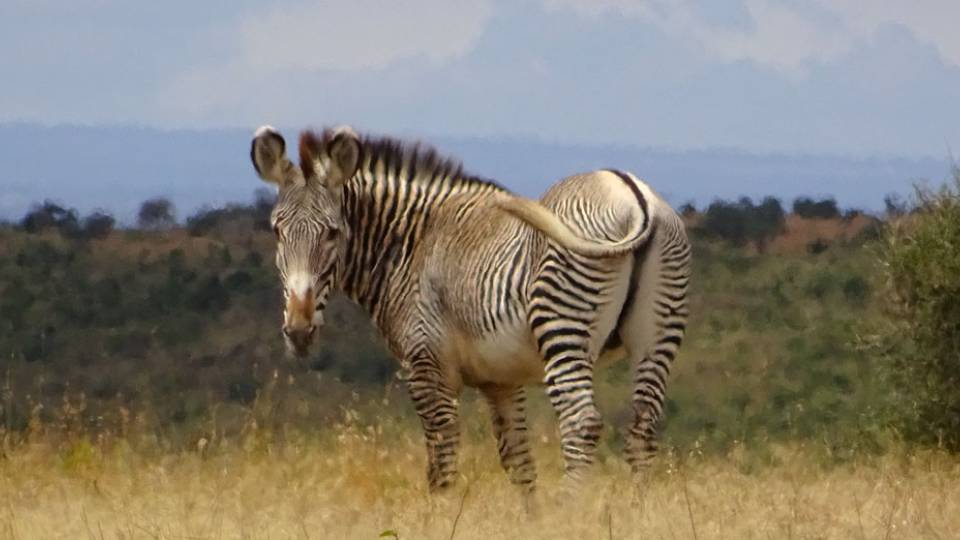Are obesity, diabetes, cardiovascular illnesses and more the result of a “mismatch” between the meals we eat and the foods our bodies are prepared for?
The “mismatch hypothesis” argues that each of our bodies has evolved and adapted to digest the foods that our ancestors ate, and that human bodies will struggle and largely fail to metabolize a radically new set of foods.
“Humans evolved in a very different environment than the one we’re currently living in,” said Amanda Lea(Link is external), a postdoctoral research fellow in the Lewis-Sigler Institute for Integrative Genomics(Link is external) (LSI), and the first author on a study in the current issue(Link is external) (Link opens in new window) of the journal Science Advances. “No one diet is universally bad. It’s about the mismatch between your evolutionary history and what you’re currently eating.”

A new study led by Princeton’s Julien Ayroles and Mpala’s Dino Martins supports the “mismatch” hypothesis. They found that obesity, diabetes and cardiovascular illnesses increased among Turkana people whose diet changed from animal-based to carbohydrate-based. Here, researchers gathered at the Mpala Research Centre in 2019. Standing, from left: Jethary Rader, Sarah Kocher, Jeremy Orina, Dino Martins and Julien Ayroles. Seated: Charles Waigwa.
The “mismatch” idea has been around for years, but it’s hard to test directly. Most experiments focus on comparing Westerners to members of hunter-gatherer societies, but that inevitably conflates any effects of diet with other genetic or lifestyle differences.
Enter the Turkana — a subsistence-level, pastoralist population from a remote desert in northwest Kenya. In the 1980s, an extreme drought coupled with the discovery of oil nearby led to rapid transformation of the region. Large segments of the population abandoned their nomadic lifestyle, some to live in villages and others in cities. Traditional Turkana still rely on livestock — dromedary camels, zebu cattle, fat-tailed sheep, goats and donkeys — for subsistence, while Turkana living in cities have switched to diets that are much higher in carbohydrates and processed foods. This is a trend that is widely observed across the world, a result of increasing globalization, even in remote communities.
“We realized that we had the opportunity to study the effect of transitioning away from a traditional lifestyle, relying on almost 80% animal byproducts — a diet extremely protein-rich and rich in fats, with very little to no carbohydrates — to a mostly carbohydrate diet,” said Julien Ayroles(Link is external), an assistant professor of ecology and evolutionary biology(Link is external) and LSI who is the senior researcher on the new paper. “This presented an unprecedented opportunity: genetically homogenous populations whose diets stretch across a lifestyle gradient from relatively ‘matched’ to extremely ‘mismatched’ with their recent evolutionary history.”

Mpala researchers Simon Lowasa and Michelle Ndegwa interview a Turkana study participant at a school in Lakipia, Kenya, in 2019.
To address the question, the researchers interviewed and gathered health data from 1,226 adult Turkana in 44 locations. The interviewers included Lea and Ayroles as well as the research team based at the Mpala Research Centre in Kenya, led by Dino Martins(Link is external). Mpala(Link is external) is best known as a site for world-class ecological studies, but with its research into the Turkana, it is also breaking new ground on anthropology and sociology and in genetics and genomics, using a new NSF-funded genomics lab.
“This is a very important first paper from the Turkana genomics work(Link is external) and the Mpala NSF Genomics and Stable Isotopes Lab,” Martins said. “Doing research like this study involves a huge amount of trust and respect with our local communities and with more remote communities: how we access them, how we interact. And the reason Mpala and Turkana can be a hub for this is because we have a long-term relationship. What has happened in many parts of the world where some of this research has been done, and it’s gone wrong, is when you have researchers parachuting in and out of communities. That does not make people trust you — it just creates a lot of an anxiety and problems. But here, the communities know us. We’ve been there for 25 years. Our research staff are drawn from local communities.”

Benjamin Mbau, an Mpala-based research assistant in the Turkana Genome Project, uses the centrifuge in the lab.
The project originated when Ayroles visited Martins, a friend from their years at Harvard University, at the Turkana Basin Institute, where Martins was based. On a brutally hot Christmas Day, deep in the desert, miles from any known village, Ayroles had been surprised to see a group of women carrying water in jars on their heads. Martins had explained that the women were carrying water back to share with their fellow Turkana, and added that these few vessels of water would be all they would drink for a week or more.
“Julian says, ‘That’s not possible. Nobody can survive on that little water,’” Martins recalled. “And so his scientist’s brain gets thinking, and he comes up with this project to say, ‘How is it that humans can survive in this incredibly harsh environment?’ And I turned it around by saying, ‘Actually, I think the question is, how is it that we’ve adapted to survive in other environments?’ Because of course, this is the environment that we all came out of.”
The project grew from there, taking shape as a study of health profiles across 10 biomarkers of Turkana living in cities, villages and rural areas. The researchers found that all 10 were excellent among Turkana still living their traditional, pastoralist lifestyle — and among the Turkana who were leading in rural villages, making and selling charcoal or woven baskets, or raising livestock for trade.
But Turkana who had moved to cities exhibited poor cardio-metabolic health, with much higher levels of obesity, diabetes, cardiovascular illness and high blood pressure. The health metrics also showed that the longer Turkana had spent living in the city, the less healthy they tended to be, with life-long city dwellers experiencing the greatest risk of cardiovascular disease.
“We are finding more or less what we expected,” Ayroles said. “Transitioning to this carbohydrate-based diet makes people sick.”
“There’s a cumulative effect,” added Lea. “The more you experience the urban environment — the evolutionarily mismatched environment — the worse it’s going to be for your health.”

Turkana women in northern Turkana carry water back to their dwelling.
Ayroles cautioned that the research should not be interpreted as favoring a protein-based diet. “One of the most remarkable things about the Turkana is that if you and I went on the Turkana diet, we would get sick really quickly!” he said. “The key to metabolic health may be to align our diet and activity levels with that of our ancestors, but we still need to determine which components matter most.”
The researchers have continued their surveys and data gathering, and they plan to expand the study to incorporate different indigenous peoples, in Pacific islands and elsewhere, who are also experiencing these shifts away from traditional lifestyles.
“We can learn so much about evolution and human health from the many traditional and subsistence-level populations around the globe,” said Lea. “They are experiencing this extraordinary, rapid environmental change, and we can witness it in real time.”
“Urbanization and market integration have strong, nonlinear effects on cardiometabolic health in the Turkana(Link is external),” by Amanda J. Lea, Dino Martins, Joseph Kamau, Michael Gurven, Julien F. Ayroles appears in the Oct. 21 issue of Science Advances (DOI: 10.1126/sciadv.abb1430). Their research was supported by an award to J.F.A. through Princeton University’s Dean for Research Innovations Funds and the Mpala funds. A.J.L. was supported by a postdoctoral fellowship from the Helen Hay Whitney Foundation. The Mpala Research Centre is administered as a trust by a partnership among trustee agencies based in the USA (Princeton University and the Smithsonian Institution), and Kenya (the National Museums of Kenya and the Kenya Wildlife Service).




